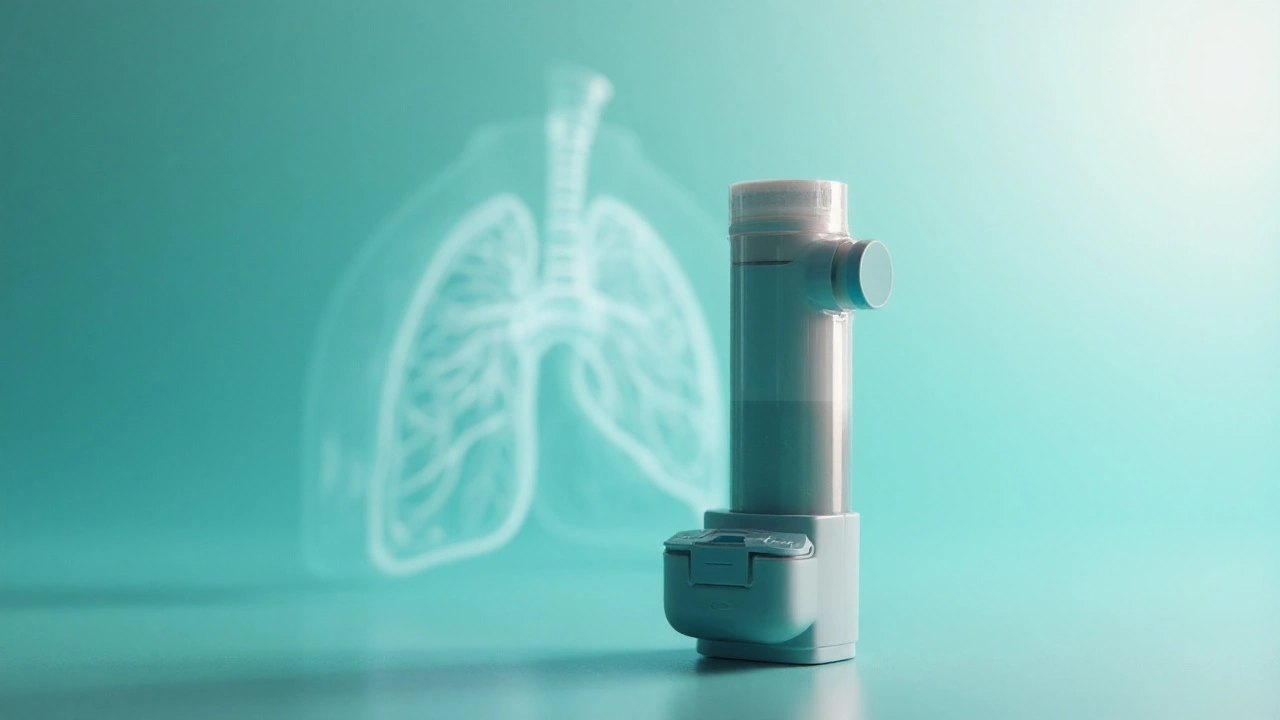People reach for Ventolin when shortness of breath hits hard, but many aren’t sure they’re using it right or know what to expect. This guide cuts through the jargon, shows you exactly when to pull the inhaler, how much to take, and which signals mean you should call a doctor. By the end, you’ll feel confident handling the inhaler and spotting warning signs before they become emergencies.
How Ventolin Works and When to Use It
Ventolin is the brand name for albuterol, a fast‑acting bronchodilator. It relaxes the smooth muscles around the airways, opening them up within minutes. That rapid action makes it the go‑to rescue inhaler for asthma, chronic obstructive pulmonary disease (COPD), and any situation where airway narrowing spikes.
- Rescue vs. maintenance: Ventolin is a rescue inhaler, not a daily controller. Use it only when symptoms flare, not as a regular preventative.
- Onset: Relief usually starts within 5‑15 minutes, peaks at 30 minutes, and can last 4‑6 hours.
- Triggers it treats: Exercise‑induced bronchospasm, allergens, cold air, stress, or viral infections.
Because it works fast, many patients keep a dose on hand at work, in the car, and by the bedside. The key is to recognize the early warning signs-tight chest, wheeze, coughing-that signal it’s time to act.

Dosage Guidelines and Inhaler Technique
Getting the right dose is a blend of age, severity, and the inhaler type (metered‑dose inhaler [MDI] vs. nebulizer). Below is a quick‑reference table that most physicians follow in the U.S. as of 2025.
| Age Group | Formulation | Typical Rescue Dose | Maximum Daily Doses |
|---|---|---|---|
| Children 0‑4 yrs | d>Nebulizer solution 0.15 mg/kg (max 2.5 mg) | 2‑4 puffs (or 2.5 mg nebulized) every 4‑6 hrs, no more than 12 puffs/24hrs |
|
| Children 5‑11 yrs | MDI 90µg per actuation | 1‑2 puffs every 4‑6 hrs, max 12 puffs/24hrs |
|
| Adolescents & Adults | MDI 90‑100µg per actuation | 2 puffs every 4‑6 hrs, max 12 puffs/24hrs |
Follow this step‑by‑step routine for an MDI:
- Shake the inhaler for 5 seconds.
- Remove the cap and exhale fully (away from the mouthpiece).
- Place the mouthpiece between lips, forming a tight seal.
- Press down on the canister **once** while starting a slow, steady inhale.
- Continue inhaling for about 3‑5 seconds, then hold your breath 10 seconds.
- Wait about 30 seconds before the next puff, repeating the process.
- Replace the cap and rinse your mouth (helps prevent throat irritation).
Common pitfalls:
- Not shaking the inhaler - leads to uneven dosing.
- Breathing in too fast - most of the medication deposits in the mouth instead of the lungs.
- Using more than the recommended number of puffs - can cause tremors, rapid heartbeat, or low potassium.
Keep track of your inhaler’s “dose counter” (many newer devices have one). When you’re down to 10‑20 puffs, order a refill. Most pharmacies in Phoenix can fill a prescription within a day, and many insurers cover 2‑year supplies for stable patients.

Safety, Side Effects, and Frequently Asked Questions
Ventolin is safe for most people when used as directed, but it does have a profile of side effects and interactions worth noting.
Common side effects (typically mild)
- Tremor or shaking of the hands.
- Fast or irregular heartbeat (palpitations).
- Headache.
- Dry mouth or throat irritation.
- Nervousness or feeling jittery.
When to seek urgent care
- Chest pain or severe tightness that doesn’t improve after two doses.
- Difficulty speaking, blue lips or fingertips.
- Rapid heart rate over 120bpm combined with dizziness.
Drug interactions
Beta‑blockers (e.g., propranolol) can blunt Ventolin’s effect and may provoke bronchospasm. Diuretics and certain heart medications can increase the risk of low potassium, especially with high‑dose use. Always tell your doctor about every prescription and over‑the‑counter product you take.
Pregnancy & breastfeeding
Albuterol is categorized as Pregnancy Category C, meaning risk cannot be ruled out, but the benefits often outweigh potential harm when asthma control is essential. Most clinicians recommend continuing the inhaler if asthma is moderate‑to‑severe. Small amounts do pass into breastmilk, but they’re not considered harmful.
Storage tips
- Keep the inhaler at room temperature (59‑86°F). Extreme heat can reduce potency.
- Store away from direct sunlight and moisture.
- Do not freeze; a frozen canister can’t deliver the correct spray.
Mini‑FAQ
- Q: Can I use Ventolin before exercise? Yes - a single puff 15 minutes before activity can prevent exercise‑induced bronchospasm.
- Q: How long does a new inhaler stay effective? Most MDIs have a shelf life of 12‑18 months if unopened. Once opened, the medication remains potent for about 4‑6 weeks, but check the expiration printed on the canister.
- Q: Is a spacer needed? A spacer or holding chamber improves lung delivery, especially for children or anyone who struggles with coordination.
- Q: What if I miss a dose? Use it as soon as you remember, unless it’s close to the next scheduled dose - then skip the missed one to avoid over‑dosing.
- Q: Can I share my inhaler with family? No. Albuterol dosing is individualized; sharing can lead to under‑ or overdosing.
Checklist: Quick Ventolin Safety Review
- ✔️ Verify prescription is current and not expired.
- ✔️ Confirm you’re using the correct inhaler type (MDI vs. nebulizer).
- ✔️ Review dose‑counter - refill before you run out.
- ✔️ Practice proper inhalation technique weekly.
- ✔️ Keep a symptom diary for 2 weeks; bring it to your next appointment.
- ✔️ Know the emergency signs that require immediate medical help.
Ventolin is a lifesaver when used correctly. By mastering technique, respecting dosage limits, and staying alert to side effects, you turn a simple inhaler into a reliable safety net for every asthma flare‑up.

